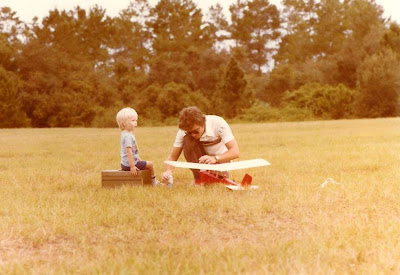 |
| History Channels: Dogfights |
Over the holiday’s I’ve had time to search through Netflix’s
extensive instant movie library for films that feature flying. I’ve run across a few gems that I think you
would enjoy dear reader. Obviously the
mail order side of Netflix has a larger inventory of cool flying movies but the
selection for instant viewing isn’t bad.
So if you are weathered in someplace with nothing to do but wait, fire
up Netflix pour yourself a cool drink and get ready to enjoy the ride.
I love the History Channel.
They have a number of documentaries about flying. I know many documentaries are a real snooze fest
but this one will really get your blood pumping. Dogfights Seasons 1 and 2 is a wonderful mix
of real historic film footage, actual pilot testimony, and cutting edge
computer graphics. They have painstakingly
and in startling detail recreated histories most incredible dogfights. You will be placed in the cockpit of a
gleaming F-86 Saber Jet hunting in Mig Alley.
The tactics and maneuvers are explained in graphic detail. You can almost smell the cordite as you fire
50-Caliber guns into Mig 15’s flown by Russian ‘Honcho’ pilots. Every episode will plunge you into the
aircraft and battles of every major air battle since WWI. You will hear the pilot’s themselves give
first person accounts in the background while you see planes engaged in mortal
combat. If you are stuck in front of the
tube with little to do try Dogfights.
Another documentary that is quite interesting is Nova’s Battle
of the X-Planes which has some rare footage of the competition for the new
Joint Strike Fighter. This is definitely
‘Must See’ TV for pilots.
The Magic of Flight: IMAX is a fun movie documentary that is
almost entirely filmed in the air. Expertly
narrated by Tom Selleck. This is a good
film for young people as well.
All pilots have a fascination with the Write Brothers and I
am no different. If you are like me you
will certainly enjoy Nova’s Wright Brothers Flying Machine. This show even goes so far as building a
replica of a Wright Flyer and shows real film footage of it’s first flight.
The next films you are likely familiar with but that’s okay,
these are the movie equivalent of comfort food for pilots. Next on our list is The Spirit of St. Louis. I hadn’t seen this movie since I was a kid
and when it magically appeared on Netflix a couple of weeks ago I decided it
was time to watch it again. It holds up
surprisingly well to my eye. James
Stewert gives the great performance that he is known for. I especially enjoyed the montage in the Ryan
factory of the Spirit being built. That
montage shows almost every aspect of building a plane even down to the rib
stitching. Who could forget Jimmy
Stewart’s screeching drawl out of the window of Spirit “Hey where’s Ireleand?”
Another great Jimmy Stewart Flying movie is Strategic Air Command. This may be one of the most accurate flying movies Hollywood has ever produced and darn good ride to boot. Having worked for SAC myself in years past I give this one two thumbs up.
This next entry is something new. The Red Baron is surprisingly good and
plunges you into the world of the famed German ace. The special effects are on par with Flyboys
and it is just as good a time. The story
does get a little slow at times but it doesn’t beleaguer the movie much. The courtesy the German and allied pilots
show each other harkens back to the age of chivalry.
The next two movies I list together because they have much
in common. They even use a lot of the
same historic battle footage. These are
of course Tora! Tora! Tora! and Midway.
If you want to get your war in the pacific fix you could do a lot worse
than these two epic films. Both movies
are blissfully free of Ben Affleck.
You Seaplane pilots out there will enjoy Flight from
Ashiya. Michael Anderson’s masterpiece
about The Air Rescue Service featuring Yul Brynner.
The final two films are documentaries. They are a little dry but have excellent film
footage and interviews. I would save
these for those nights that you just can’t sleep; these will send you off with
dreams Merlin Engines dancing in your head.
Empires of Industry: War Planes of World War II and Memphis Belle are
two films every pilot should partake in.
Well dear reader I have given your hours of Netflix viewing
for pilot’s I am sure there is more in there and as they add to the instant
library I will keep you posted. For
example I am still waiting for them to give us ‘Those Magnificent Men and Their
Flying Machines’! It’s available on DVD
but as of this writing still not instant.





































